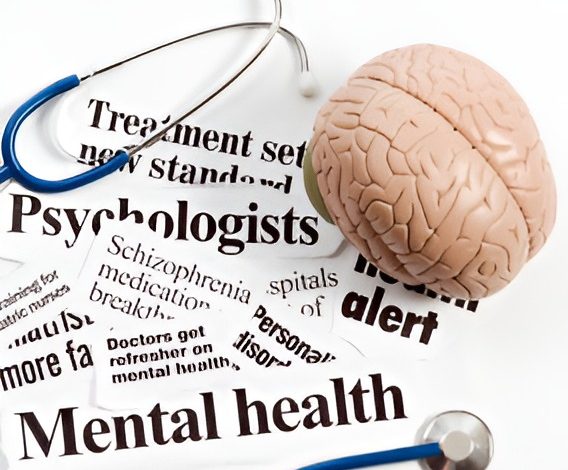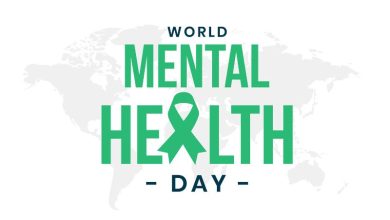Mental Health for All: How to Bridge the Gap in Global Support Systems

Mental health is no longer a side note in global health conversations—it has become one of the most urgent challenges of our time. Anxiety, depression, and stress-related illnesses are on the rise everywhere, from busy metropolitan cities to remote rural villages. Yet despite this growing awareness, millions of people around the world still lack access to proper mental health support.
The phrase “Mental Health for All” isn’t just a slogan; it’s a call to action. The reality is that while conversations have improved, actual systems of care remain uneven, inaccessible, and often misunderstood. Bridging the gap in global support systems is not just about treating illness—it’s about building inclusive societies where mental well-being is seen as a fundamental human right.
The Growing Global Burden of Mental Health Issues
Statistics tell a chilling story. According to the World Health Organization (WHO), one in every eight people worldwide lives with a mental health condition. Depression is now the leading cause of disability globally, while suicide claims nearly 800,000 lives every year—that’s one person every 40 seconds.
But the problem goes deeper than numbers. In many low- and middle-income countries, mental health resources are scarce, and stigma prevents people from seeking help. Even in wealthier nations, long waiting lists, high costs, and inadequate insurance coverage often leave people suffering in silence.
Why Mental Health Support Systems Are Unequal
The disparity in mental health support across countries and communities can be traced to several root causes:
- Stigma and Cultural Barriers – In some societies, mental illness is seen as weakness, shame, or even a spiritual failing. This prevents people from openly seeking help.
- Uneven Healthcare Prioritization – Governments often underfund mental health programs, choosing instead to prioritize physical health infrastructure.
- Shortage of Professionals – There is a critical global shortage of trained psychiatrists, psychologists, and counselors, especially in rural and underdeveloped areas.
- Economic Inequality – Even when support exists, therapy, medications, and treatment programs are often too expensive for ordinary people.
- Digital Divide – While telehealth is revolutionizing mental health care, millions in low-income regions lack internet access or digital literacy.
The Role of Culture in Mental Health Access
Culture shapes how mental illness is perceived and treated. For example, in some Asian and Middle Eastern cultures, discussing depression is taboo, forcing individuals to internalize their struggles. In contrast, Western societies have more open conversations about therapy and mental health awareness campaigns.
This cultural gap plays a huge role in how effective global mental health systems can be. Without respecting cultural contexts and traditions, mental health solutions may not resonate with the communities that need them most.
The Importance of Early Intervention
One of the most effective ways to reduce the burden of mental illness is early intervention. Studies show that addressing mental health concerns early—especially among children and adolescents—can prevent more serious disorders later in life.
Yet globally, most children grow up in education systems with little to no mental health resources. Teachers are rarely trained to recognize signs of anxiety, trauma, or learning difficulties. By integrating mental health education and support into schools, societies can take a giant step toward prevention rather than crisis management.
Mental Health in Crisis Zones: A Forgotten Priority
Wars, natural disasters, and humanitarian crises have devastating effects on mental well-being. Refugees and displaced families often suffer from post-traumatic stress disorder (PTSD), anxiety, and depression. Yet, mental health support in crisis zones is often overshadowed by the immediate need for food, water, and shelter.
For global organizations, the challenge is to integrate psychological first aid into emergency response systems, ensuring that healing includes both body and mind.
Technology: A New Hope for Global Mental Health
One of the most promising solutions for bridging the mental health gap lies in technology. Teletherapy apps, AI-driven chatbots, and online support communities are revolutionizing access to care. People in remote areas can now connect with professionals thousands of miles away.
Apps like Headspace, BetterHelp, and AI-powered support systems are breaking down barriers of cost and location. However, digital access must expand in low-income regions to ensure true inclusivity.
The Power of Community Support Systems
While professional help is vital, community-based support systems are equally powerful. Peer support groups, faith-based organizations, and grassroots initiatives often provide safe spaces for people to share their struggles.
For instance, in African countries where psychiatrists are scarce, community health workers trained in basic counseling have become lifelines for thousands. Similarly, support groups in Western countries have shown how shared experiences can reduce stigma and promote healing.
Governments and Policy: The Backbone of Change
If “mental health for all” is to become reality, governments must prioritize mental health in their healthcare agendas. Policies should:
- Increase funding for mental health services.
- Integrate mental health into primary healthcare.
- Ensure affordable medications and therapies.
- Train more professionals and community workers.
- Launch awareness campaigns to fight stigma.
Without systemic changes, individual efforts—though impactful—cannot close the global gap.
Corporate Responsibility: The Workplace Factor
Workplaces are often where stress, anxiety, and burnout begin. Employers have a responsibility to recognize mental health as part of overall employee well-being. Offering counseling, stress management programs, and flexible work environments can drastically improve productivity and morale.
Some global companies like Google and Microsoft have introduced mental health days, therapy coverage, and wellness programs. If more organizations adopt such practices, millions could receive preventive care before reaching crisis point.
Mental Health in the Digital Age
Digital tools have become part of everyday life—shaping how we work, socialise, learn, and unwind. But with that constant connection comes a rising concern: how does heavy screen use affect mental health? Many teens and adults are now reporting higher levels of anxiety, depression, and stress, with growing research linking these conditions to excessive time spent online.
If you’re a parent, caregiver, teacher, or someone navigating your own emotional wellbeing, you might be asking: Is too much screen time harming mental health? The causes, signs, and ways to protect yourself and others in this digital environment
Related Article: Mental Health in the Digital Age
Bridging the Gap: What Can Be Done?
Achieving mental health for all requires multi-level collaboration. Here’s how the gap can be bridged:
- Global Cooperation – Wealthier nations and organizations must support mental health programs in low-income regions.
- Education and Awareness – Normalize conversations about mental health from schools to workplaces.
- Affordable Access – Subsidize therapy and medications so they’re not luxuries only the rich can afford.
- Cultural Sensitivity – Tailor mental health initiatives to different cultural and social contexts.
- Technology Expansion – Provide digital resources to rural and underserved communities.
- Grassroots Empowerment – Train local leaders and community workers in basic counseling.
Stories of Change: Real-Life Inspiration
- In India, a project called Atmiyata trained community volunteers to provide emotional support in rural villages. This grassroots model helped thousands who would otherwise have no access to therapy.
- In Kenya, the Friendship Bench program trains grandmothers to offer counseling in their communities, showing that healing can come from within society itself.
- In the U.S., increased access to telehealth during the pandemic helped millions seek therapy for the first time, proving the power of technology in breaking stigma.
These stories prove that solutions don’t always need massive budgets—sometimes they just need empathy, creativity, and community spirit.
A Future Where Mental Health is a Right, Not a Privilege
Imagine a world where a child in Nigeria has the same access to therapy as a teenager in New York. Where refugees in Syria receive psychological first aid alongside food supplies. Where no one hesitates to say, “I need help,” because the support is already there.
This future is possible—but only if we collectively decide that mental health is a human right, not a privilege.
Conclusion: Turning Awareness into Action
The world is talking about mental health more than ever before—but talking alone isn’t enough. True change requires action: better funding, stronger policies, wider access, and cultural sensitivity.
“Mental Health for All” isn’t just about removing illness—it’s about creating systems where every individual, regardless of income, culture, or geography, can live with dignity, resilience, and hope.
The journey to bridging the gap in global support systems may be long, but it’s not impossible. With governments, communities, and individuals working together, we can transform mental health care from a privilege of the few into a lifeline for all.
Because mental health is not a luxury. It is, and always will be, a right.




